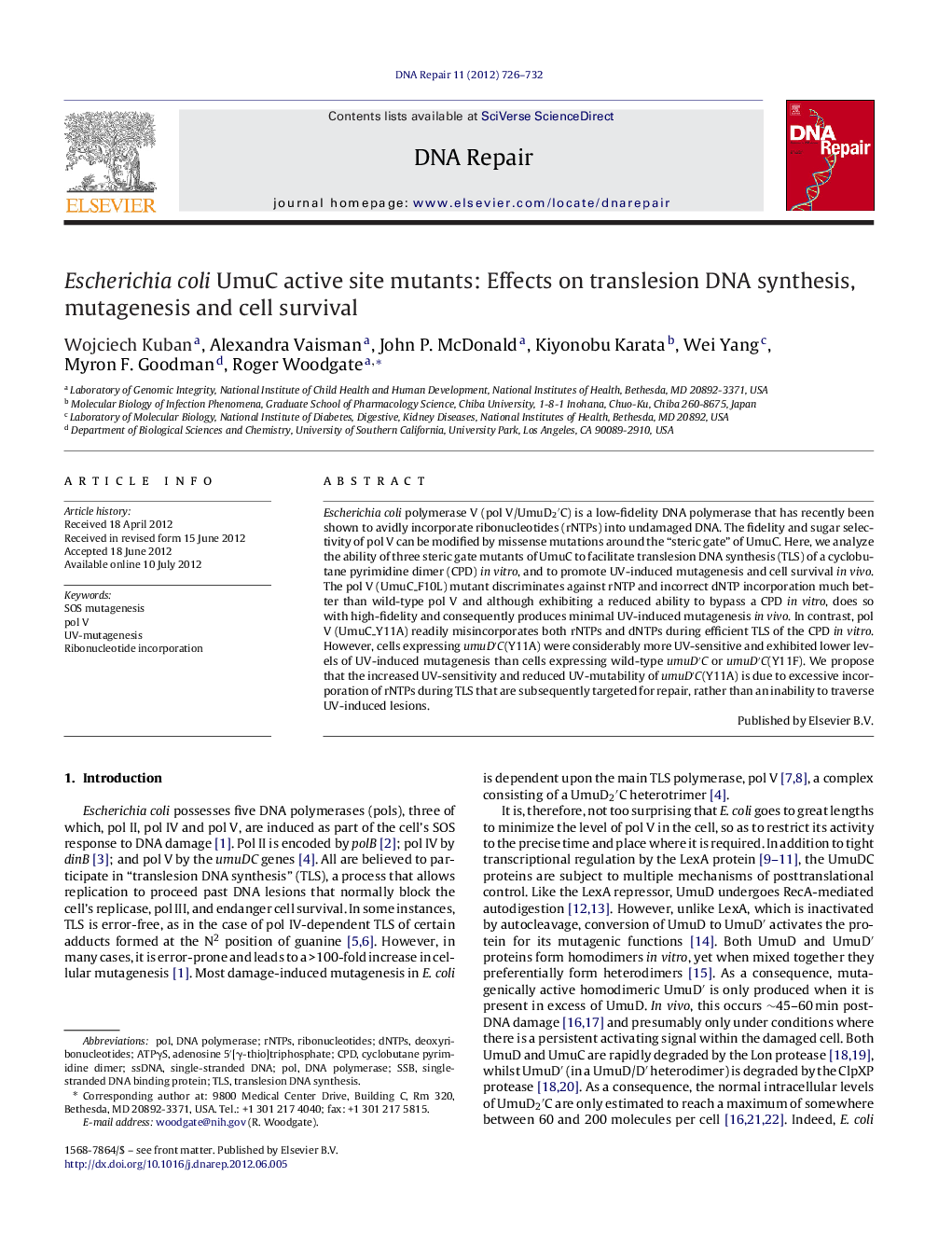| Article ID | Journal | Published Year | Pages | File Type |
|---|---|---|---|---|
| 1980253 | DNA Repair | 2012 | 7 Pages |
Escherichia coli polymerase V (pol V/UmuD2′C) is a low-fidelity DNA polymerase that has recently been shown to avidly incorporate ribonucleotides (rNTPs) into undamaged DNA. The fidelity and sugar selectivity of pol V can be modified by missense mutations around the “steric gate” of UmuC. Here, we analyze the ability of three steric gate mutants of UmuC to facilitate translesion DNA synthesis (TLS) of a cyclobutane pyrimidine dimer (CPD) in vitro, and to promote UV-induced mutagenesis and cell survival in vivo. The pol V (UmuC_F10L) mutant discriminates against rNTP and incorrect dNTP incorporation much better than wild-type pol V and although exhibiting a reduced ability to bypass a CPD in vitro, does so with high-fidelity and consequently produces minimal UV-induced mutagenesis in vivo. In contrast, pol V (UmuC_Y11A) readily misincorporates both rNTPs and dNTPs during efficient TLS of the CPD in vitro. However, cells expressing umuD′C(Y11A) were considerably more UV-sensitive and exhibited lower levels of UV-induced mutagenesis than cells expressing wild-type umuD′C or umuD′C(Y11F). We propose that the increased UV-sensitivity and reduced UV-mutability of umuD′C(Y11A) is due to excessive incorporation of rNTPs during TLS that are subsequently targeted for repair, rather than an inability to traverse UV-induced lesions.
► “Steric gate” mutants of E. coli pol V have been characterized in vitro and in vivo. ► UmuC F10L mutant exhibits low UV-mutability because the enzyme bypasses a T–T CPD with high fidelity. ► UmuC Y11A steric gate mutant can bypass a T–T CPD efficiently, but is highly error-prone and misincorporates both ribonucleotides and deoxyribonucleotides during TLS in vitro.
